For individuals who have previously obtained permanent residence in the Philippines and are now returning from a temporary visit abroad, there is an opportunity to convert to a non-quota immigrant visa. This option allows for a seamless transition back to uninterrupted residence in the Philippines, eliminating the need to go through the usual visa application process.
By choosing this option as a returning resident, one can efficiently restore their permanent residence in the country. Understanding the process of converting to a non-quota immigrant visa empowers returning residents to smoothly reintegrate into their lives in the Philippines.
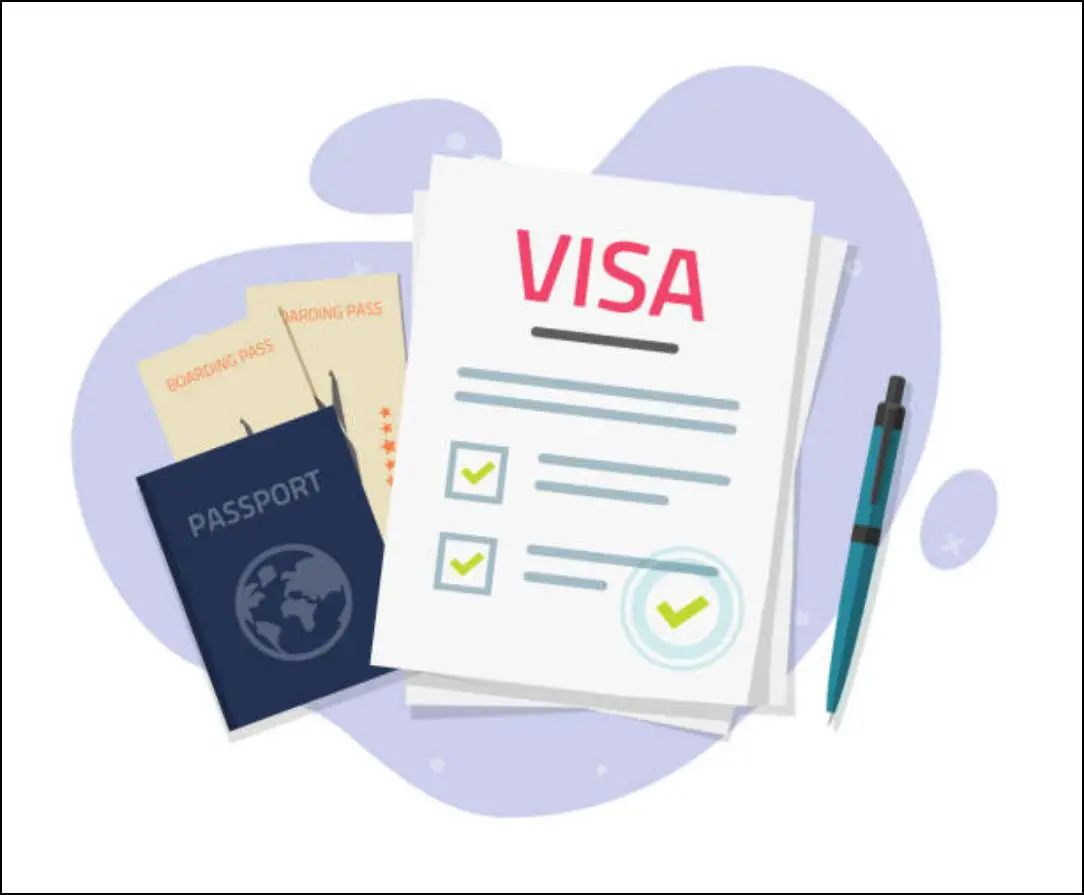
Benefits of Converting to a Non-Quota Immigrant Visa
Converting to a non-quota immigrant visa is a great way to ensure that your return to the Philippines is as seamless as possible. With this type of visa, you can enjoy several benefits such as:
- Expedited Application Processing: The application process for non-quota immigrant visas is usually faster, allowing you to obtain your visa more quickly.
- Seamless Return to the Philippines: Converting to a non-quota immigrant visa ensures a smooth transition when you return to the Philippines, eliminating unnecessary delays or complications.
- Greater Flexibility: With a non-quota immigrant visa, you have more flexibility in terms of your stay and employment options in the Philippines.
- Extended Stay: Non-quota immigrant visas often offer longer periods of authorized stay, allowing you to spend more time in the Philippines without the need for frequent visa renewals.
- Access to Services and Benefits: Non-quota immigrant visa holders may have access to various services and benefits provided by the Philippine government, such as healthcare, education, and social security.
- Opportunities for Family Reunification: Converting to a non-quota immigrant visa can facilitate the reunification of family members, allowing them to join you in the Philippines.
Please note that specific benefits may vary depending on the type of non-quota immigrant visa you obtain.
Who is eligible to apply?
This opportunity is open to individuals who have previously been granted permanent residence in the Philippines and are now returning to an unyielding residence in the Philippines after a temporary visit abroad.
Where to Submit an Application?
Bureau of Immigration Main Office
What are the Requirements Needed?
Please carefully review the checklist of documentary requirements for permanent residents returning from a temporary visit abroad. Make sure to complete the following:
- A Comprehensive checklist of required documents is below:
- Write a letter addressed to the Commissioner, expressing your intention to reside permanently in the Philippines and explaining the reason for overstaying outside the country.
- Fill out the CGAF form (BI Form CGAF).
- Provide a photocopy of your passport’s biographical page and the arrival stamp within the last 5 years.
- Include proof of payment for the required fees.
- Show evidence of financial capacity or a stable source of income, such as pension or remittances from family members abroad, income tax returns and proof of payment, or a BIR Certificate of Registration for a newly established business.
- Submit a valid National Bureau of Investigation (NBI) clearance.
- Obtain a clearance certificate from the Bureau of Immigration (BI).
- If you are a national of countries listed under Annex “A” of Immigration Operations Order No. SBM Philippines, provide the original or certified true copy of the Bureau of Quarantine Medical Clearance if you arrived in the Philippines after June 2014.
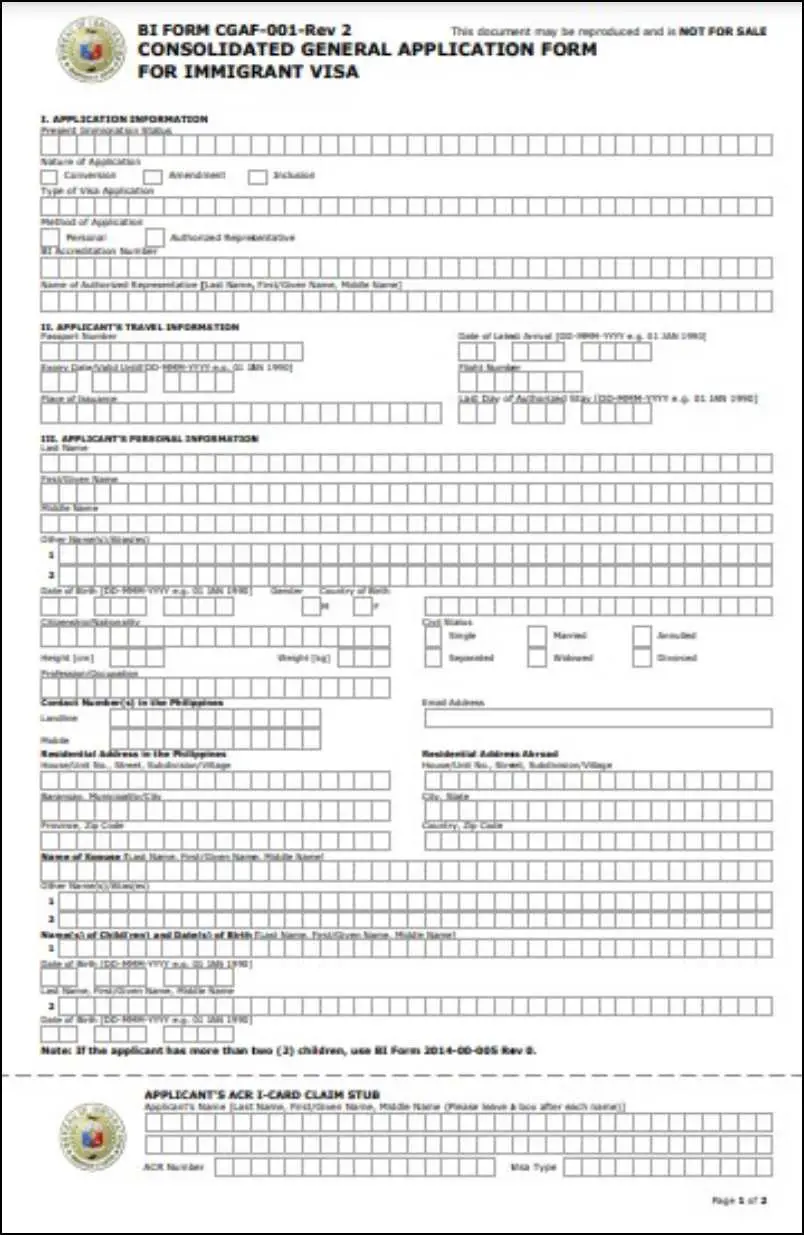
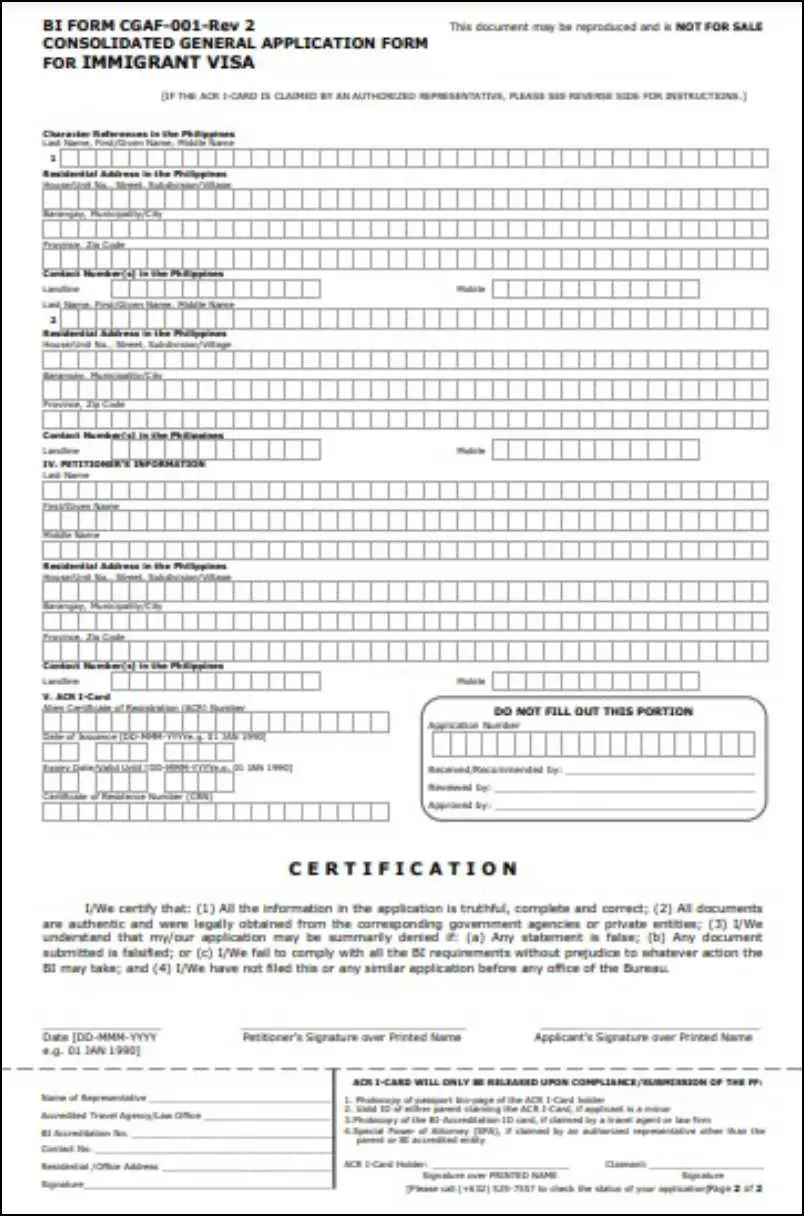
- Supplementary details about the applicant’s children (if necessary)

Please ensure that you have met all these requirements before proceeding.
Also read: Guide: Eligibility for a Permanent Resident Visa in the Philippines
IMPORTANT REMINDERS!
To ensure that your application/petition is not summarily dismissed or delayed in processing, please follow these general instructions:
- Fill in all the required information on the form clearly and legibly. If a particular section is not applicable, write “N/A” instead of leaving it blank. Use English characters only, writing all entries in CAPITAL LETTERS.
- The CGAF (Comprehensive General Application Form) should be completed in two copies, with the second copy intended for the Alien Certificate Registration Identity Card (ACR I) application.
- Arrange and compile all the necessary documents as listed in the Checklist of Documentary Requirements (CDR), ensuring they are in the prescribed order and legal size, if applicable.
- All sworn statements or affidavits must be original and properly notarized.
- Civil registry documents issued in the Philippines, such as Birth Certificates or Marriage Certificates, must be original and issued by the National Statistics Office.
- Foreign documents must be original and authenticated by the Philippine Foreign Service Post (FSP) with jurisdiction over the place of issuance, or by the Department of Foreign Affairs (DFA) if the document is issued by a local Embassy in the Philippines.
- If the application is being filed by an authorized representative, please attach an Accreditation Identification (ID) Certificate or an original Special Power of Attorney (SPA) along with a photocopy of a valid government ID.
- The original valid passport of the applicant must be submitted to the Central Receiving Unit (CRU) personnel or the concerned frontline officer for scanning. It will be returned after scanning.
- The applicant and/or petitioner must always carry their original passport and/or valid ID during any interaction or interview with Visa Officers.
By adhering to these instructions, you can help ensure a smooth and efficient processing of your application/petition.
Also read: Guide on Applying for a Temporary Visitor’s Visa for Foreign Nationals Visiting the Philippines
Procedure: Step-by-Step Guide
To apply, follow these steps:
Step 1: Obtain the CGAF form either from the Public Information and Assistance Unit (PIAU) at the BI G/F Main Office or download it from the official BI Website.
Step 2: Submit the required documents for pre-screening to the Central Receiving Unit (CRU) or to the frontline officer/staff at other Immigration Offices authorized to process this transaction.
Step 3: Collect the Order of Payment Slip (OPS) for the necessary fees.
Step 4: Make the payment for the required fees.
Step 5: Present a copy of the Official Receipt as proof of payment.
Step 6: Attend the scheduled hearing, which will be specified on the Official Receipt along with the venue for the hearing and Image and Fingerprint Capturing.
Step 7: Proceed to the Image and Fingerprint Capturing Counter of the Alien Registration Division (ARD) and submit the necessary requirements for the ACR I-Card application.
Step 8: Regularly check the official website for updates on the status of your visa application.
Step 9: If your visa application is approved, submit your passport for visa implementation.
Step 10: Once the ACR I-Card is approved, proceed to claim it.
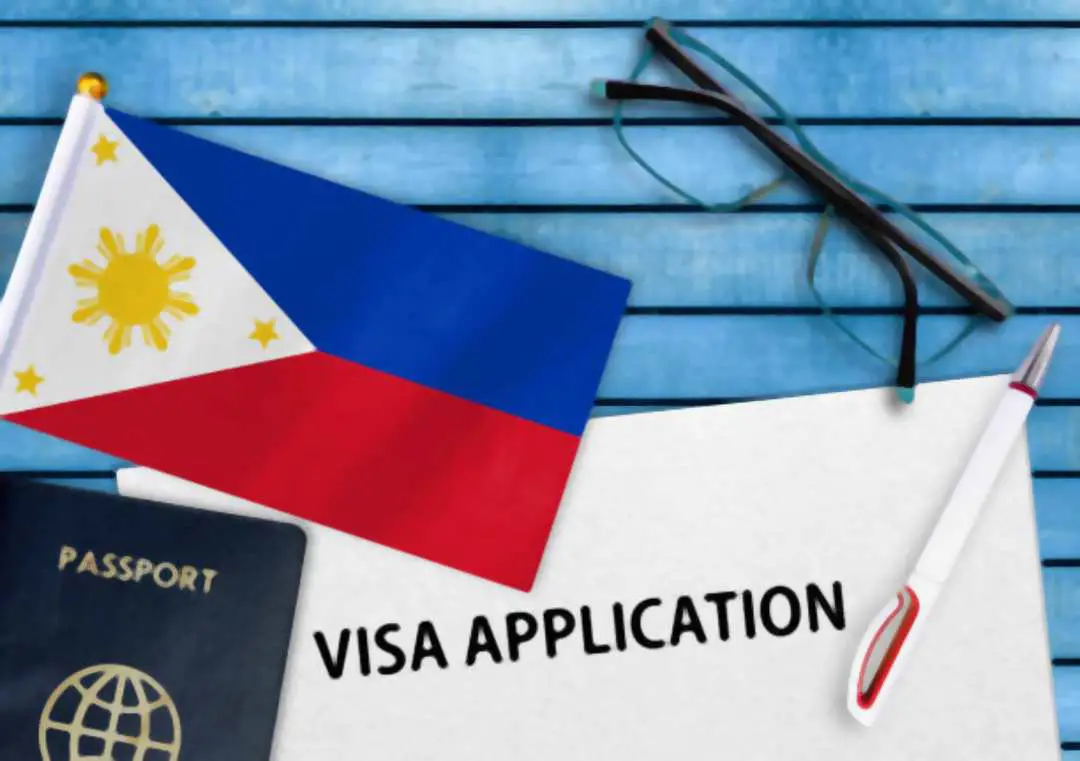
Follow these steps carefully to ensure a smooth application process.
What is the cost of the processing fees?
PRINCIPAL – Php 8,620.00
DEP-SPOUSE – Php 8,620.00
DEP-B16 – Php 8,370.00
DEP-B14 – Php 7,870.00
Additional Fee for ACR I-Card is 1 Year – + US $50
*Fees are updated as of 06 March 2014 and are subject to change without prior notice.
Tips and Considerations to Make Your Move Easier
When you’re preparing to move back to the Philippines, there are a few tips and considerations to make the transition smoother. Here are some things to keep in mind:
Here are some tips and considerations to make your move to the Philippines easier:
- Ensure you have all the necessary documentation for your Non-Quota Immigrant Visa application, including a valid passport, proof of financial means, and health records.
- Research and familiarize yourself with the local customs, culture, and laws of the Philippines.
- Plan your budget and financial arrangements accordingly, taking into account the cost of living, currency exchange rates, and potential expenses.
- Consider hiring a reputable moving company or shipping service to assist with transporting your belongings.
- Arrange for necessary utilities and services, such as setting up a bank account, obtaining a local SIM card, and connecting utilities like electricity and internet.
- Notify relevant parties of your change of address, including banks, government agencies, subscriptions, and family and friends.
- Pack and organize your belongings strategically, ensuring you have essential items readily accessible upon arrival.
- Learn some basic phrases in the local language to help ease communication and make connections with locals.
- Seek advice and guidance from expat communities, forums, or online groups to gain insights and recommendations for a smooth transition.
- Embrace the adventure and excitement of starting a new chapter in the Philippines!
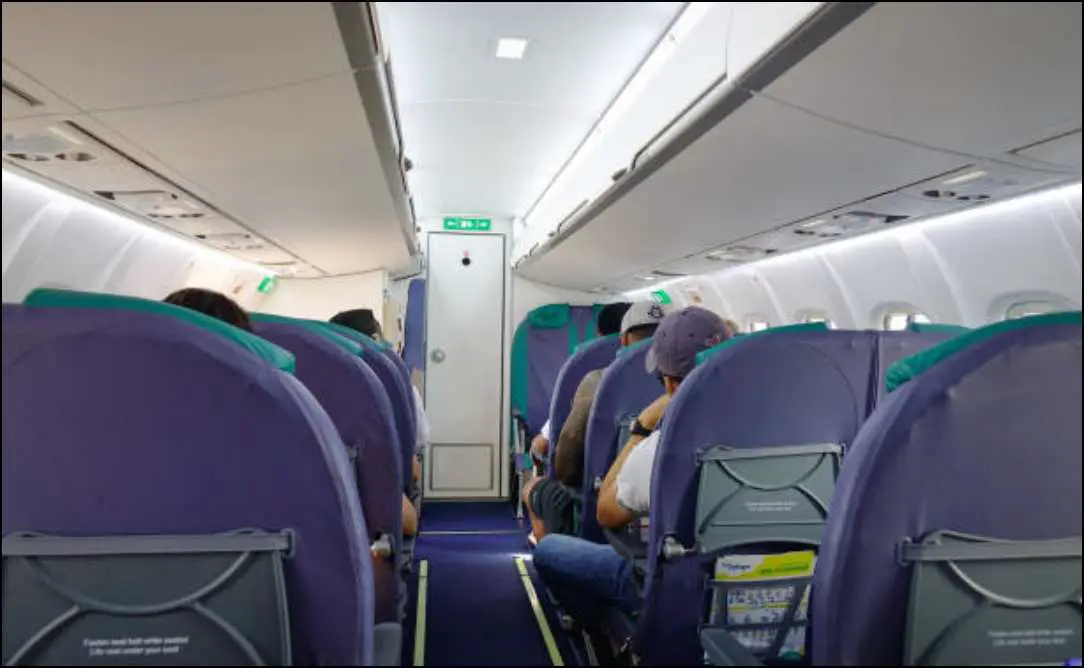
Frequently Asked Questions
1. What is a Non-Quota Immigrant Visa?
A: A Non-Quota Immigrant Visa is a type of visa that allows a seamless transition for individuals returning to the Philippines.
2. Who is eligible to convert to a Non-Quota Immigrant Visa?
A: Filipino citizens who have acquired permanent residency abroad and wish to return to the Philippines can apply for a Non-Quota Immigrant Visa.
3. How can I apply for a Non-Quota Immigrant Visa?
A: To apply for a Non-Quota Immigrant Visa, you need to submit the necessary documents and requirements to the Philippine Embassy or Consulate in your country of residence.
4. How long does it take to process a Non-Quota Immigrant Visa application?
A: The processing time can vary, but it typically takes several weeks to a few months. It is advisable to submit the application well in advance of your planned return to the Philippines.
5. Can I bring my immediate family members with me under the Non-Quota Immigrant Visa?
A: Yes, immediate family members such as spouses and unmarried children under 21 years old can also apply for a Non-Quota Immigrant Visa.
6. Can I work in the Philippines with a Non-Quota Immigrant Visa?
A: Yes, holders of a Non-Quota Immigrant Visa are allowed to work in the Philippines without the need for additional work permits.
Summary
As a returning resident who was previously granted permanent residence in the Philippines, you have the option to convert to a non-quota immigrant visa upon your return from a temporary visit abroad. This transaction is applicable only if you have an unrelinquished residence in Philippines waiting for you.
So, if you are seeking to settle back into your life in the Philippines permanently, this is a viable option for you. Make sure to take advantage of all opportunities available to make your transition back to the Philippines as seamless as possible.